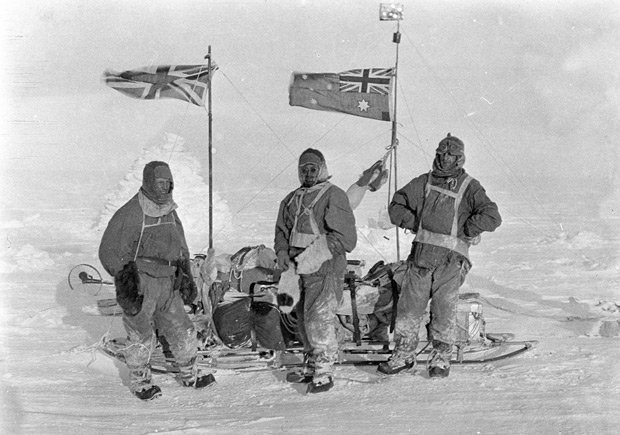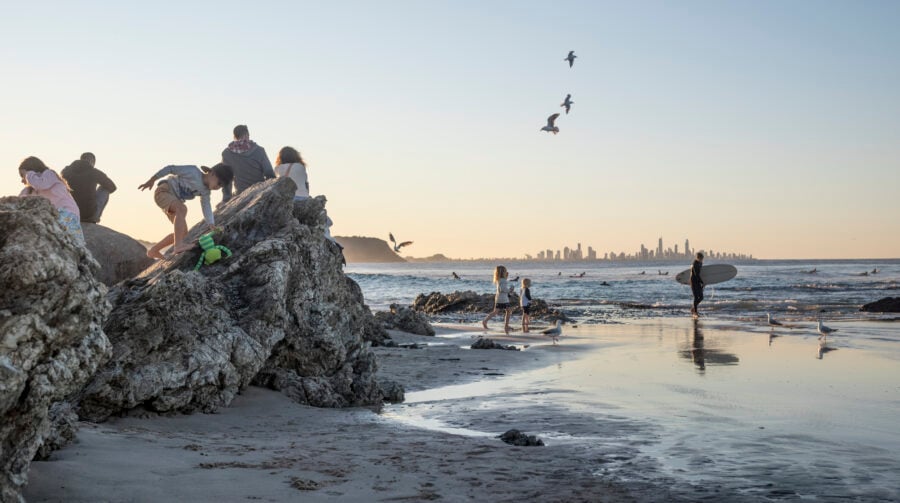Survival in Antarctica: longest solo feat

‘THE REASON SO MANY men have gone mental down here is not just the doing nothing but the dreadful silence. The silence is really heavy, it’s oppressive, there’s nothing to make the slightest noise.’ – Moreton Henry Moyes
Sharp winds were tearing across the ice shelf at over 240k/hr on Thursday, 21 November 1912, and Moreton Henry Moyes, the meteorologist for Western Base in Douglas Mawson’s Australasian Antarctic Expedition, feared for his safety.
He had been on his own in a small Antarctic research hut for over three weeks, and he was another seven until he caught sight of another human being. He had to cope with loneliness, silence, and the nauseating possibility of being the only expedition member left alive.
Inspired by Mawson
It was in a dusty lecture hall at the University of Adelaide that the young Moyes first met Dr Douglas Mawson, a geology lecturer who had a profound impact on the young man.
Mawson had been a member of Shackleton’s Nimrod Expedition, reaching the Magnetic South Pole in January 1909; he had turned down an invitation to accompany British explorer Robert Falcon Scott on the Terra Nova expedition, which ultimately turned out be a fatal success, opting instead to head his own, leading the Australasian Antarctic Expedition (AAE).
Inspired, Moyes then successfully applied to join the expedition.
While Roald Amundsen and Scott vied for the Pole – with Amundsen claiming victory on 14 December 1911 and Scott trailing a close second just 33 days later – Mawson landed at Cape Denison on Commonwealth Bay on 8 January 1912.
Moyes and the other seven men, destined for the Western Base, then travelled over 2000km west, eventually landing on the Shackleton Ice Shelf.
It was precarious from the start. Western base leader Frank Wild wrote in his diary: “Some of the ship’s company gave their opinions to the Australian press and at least one paper stated that ‘Wild’s party is camped on moving ice and there is little probability they will ever been seen again.'”
They had been forced to land over 500km from their intended site, and if the Aurora didn’t make it to Hobart, no-one would ever know where they were and they would be permanently stranded.
Death was always around the corner for these polar pioneers.
At November 1912, eleven had people died in just five expeditions, the most famous, and the most catastrophic, were the death of all five members of Scott’s party to reach the Pole, including the legendary self-sacrifice of Captain Oates (I am just going outside, and may be some time). By January, two more would have died from the AAE on a lethal sledging trip with Mawson.
Surviving alone in Antarctica
Originally, Moyes was to stay behind with Charles Harrisson, who journeyed 160km with Wild’s eastern sledging party, which left on 30 October, with the intention of coming back after setting up a food depot.
But Wild lost a sledge in the severe weather, and in dire need of another, Harrisson was forced to join the 10-week party with the sledge he had intended to use on his return journey to Moyes and the huts.
Moyes was abandoned and the loneliness almost turned him insane. He constantly feared for Harrisson’s safety, thinking the worst.
But as his grand-niece Judith Adams now recalls, “he was a very disciplined man. This helped him; otherwise he would have gone down like many others.”
See a related gallery of early maps of Antarctica
Ultimate Antarctic survival
At one point, he wrote a list of possible scenarios as to Harrisson’s fate, from “May have gone on with Eastern Party” to “Found a crevasse”. But the worst thing for Moyes was the silence. “The silence is so painful now that I have a continual singing in my left ear,” he wrote.
Until 6 January, Moyes was completely alone. He spent the 10 weeks hunting skua gulls, reading the Bible and books by Macaulay, vigilantly keeping a journal and occupying himself with a daily routine, just to keep his wits.
When the party returned, he heard their singing and momentarily thought he’d toppled over the edge of sanity. “I rushed outside, and nearly crazy with delight saw a sledge party approaching with all flags set,” he wrote. “Joyfully, I counted four men and stood on my head, recognising that Harrisson must be one. They’d been in the same state about me as I have about Harrisson.”
He ultimately returned to Australia in March 1913 and became headmaster of University Coaching College in Sydney. He made further trips to Antarctica in 1916, rescuing Shackleton’s stricken Trans-Antarctic Expedition, and 1929.
Forging a career in the navy, Moyes was appointed an Officer of the British Empire in 1935, retiring in 1951. He kept in contact with surviving members of his Antarctic expeditions throughout his life, and published memoirs of his Antarctic travels. He died in Sydney in 1981, at the age of 95.
“He’s a hero,” Judith says, “but he always thought of himself as part of a team. He was never an arrogant man; he was a person [who] inspired so many people.”
His incredible story will be one of those featured in the NSW State Library’s ‘Finding Antarctica: Mapping the last continent‘ exhibition, which will run from the 3 December, 2011 to 19 February, 2012.
RELATED STORIES




